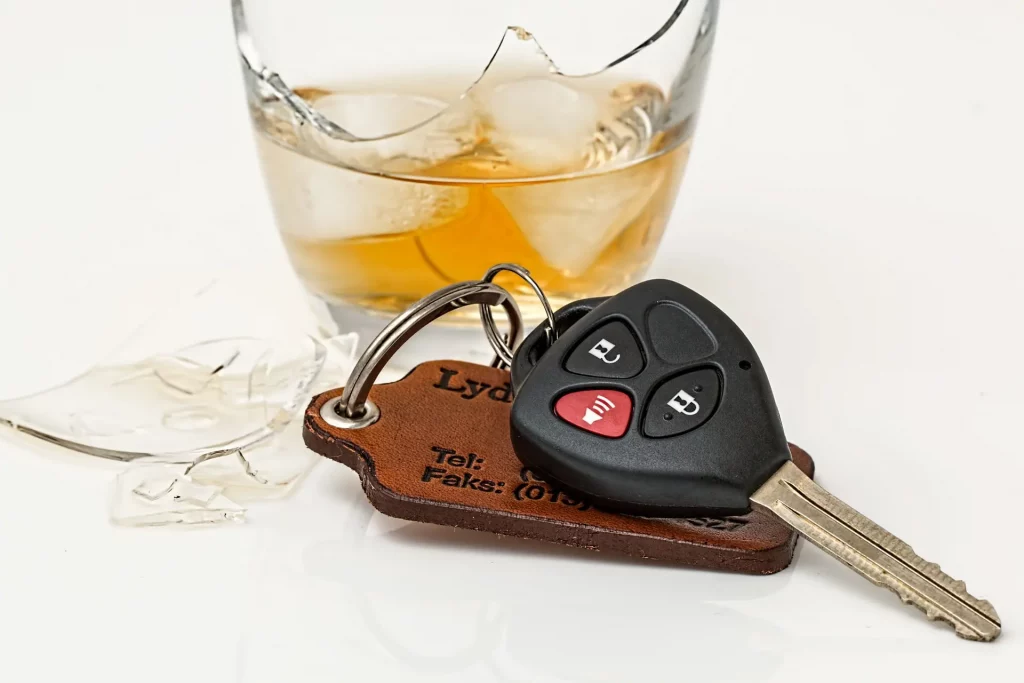New York Lane Splitting Laws Explained
Motorcyclists face unique challenges on the road due to their smaller size and limited visibility. They are more vulnerable to accidents and injuries compared to other vehicles. One practice that has gained attention in recent years is lane splitting, which involves a motorcycle riding between the lanes of traffic. While lane splitting is currently illegal in New York, it is legal in California. This blog aims to provide an understanding of lane splitting laws in New York and shed light on the pros, cons, and safety recommendations for this practice.
Understanding Lane Splitting
Lane splitting is a practice where a motorcycle rides between the lanes of stopped or slow-moving traffic while traveling in the same direction. It is also known as stripe riding, filtering, white lining, or lane sharing. Lane splitting is a controversial topic, with both supporters and opponents.
Proponents of lane splitting argue that it can help reduce traffic congestion, improve the flow of traffic, and provide motorcyclists with a safer route through congested areas. They also believe that lane splitting can increase the visibility of motorcyclists to other drivers, reducing the risk of accidents.
Opponents of lane splitting, on the other hand, argue that it poses significant risks to both motorcyclists and other drivers. They believe that allowing motorcycles to weave between lanes can increase the risk of accidents, as drivers may not anticipate or be prepared for the sudden presence of a motorcycle in their blind spot. Additionally, some argue that lane splitting can create a dangerous environment where motorcyclists are more likely to be involved in accidents.
The concept of lane splitting is still being debated, and there is limited research on its safety and effectiveness. While some countries and states have legalized lane splitting, the evidence supporting its benefits or risks is inconclusive.
Concept of Lane Splitting
The concept of lane splitting involves a motorcycle riding between the lanes of traffic. This practice is typically employed by motorcyclists to navigate through heavy traffic or avoid being stuck in traffic jams. Lane splitting allows motorcyclists to take advantage of their smaller size and maneuverability, potentially reducing their travel time.
However, lane splitting can be risky. Other drivers may not anticipate the presence of a motorcycle between lanes and may make sudden lane changes or open car doors without checking for motorcycles. Additionally, narrow lanes, heavy traffic, and aggressive driving behaviors can further increase the dangers of lane splitting.
While there are arguments for and against lane splitting, it is important for motorcyclists to understand the laws and regulations regarding this practice in their state. In New York, lane splitting is currently illegal, and motorcyclists should adhere to the traffic laws and regulations like any other vehicle on the road.
Pros and Cons of Lane Splitting
Pros:
- Potential reduction in traffic congestion and travel time for motorcyclists
- Increased visibility of motorcyclists to other drivers, potentially reducing the risk of accidents
- Allows motorcyclists to avoid being stuck in traffic jams and navigate through congested areas
- Gives motorcyclists the ability to maneuver and avoid road hazards
Cons:
- Increased risk of accidents due to drivers not anticipating or being prepared for motorcycles between lanes
- Potential for abrupt lane changes or car doors opening unexpectedly, leading to collisions
- Narrow lanes, heavy traffic, and aggressive driving behaviors can increase the dangers of lane splitting
- Controversial practice with limited research on its safety and effectiveness
Lane Splitting Laws in New York
In New York, lane splitting is currently illegal. Motorcyclists are required to follow the same traffic laws as other vehicles on the road. New York has specific laws in place for motorcyclists, including helmet requirements and the right to use the entire lane. Motorcyclists should be aware of these laws and regulations to ensure their safety and compliance with the law.
Current Status of Lane Splitting Laws
Currently, lane splitting is only legal in one state in the United States – California. New York, along with 49 other states, has laws that prohibit lane splitting. In New York, motorcyclists are required to follow the same traffic laws as other vehicles on the road.
It is important for motorcyclists to understand and comply with the laws of the state they are riding in to ensure their safety and avoid potential penalties for breaking the law. While lane splitting may be legal in some countries and states, it is not recognized as a legal practice in New York.
Motorcyclists in New York should prioritize their safety by following traffic laws, wearing proper protective gear, and practicing safe driving techniques. If a motorcyclist is involved in an accident while lane splitting, they may face legal consequences and potential liability for the accident.
Penalties for Lane Splitting Violations
Since lane splitting is illegal in New York, motorcyclists who engage in this practice may face penalties if caught by law enforcement. The specific penalties for lane splitting violations may vary depending on the circumstances and the individual’s driving record.
Penalties for lane splitting violations can include fines, points on the driver’s license, and potential license suspension. It is important for motorcyclists to understand the potential consequences of lane splitting and to prioritize their safety by following the laws and regulations of the state.
Motorcyclists who have been involved in accidents while lane splitting may also face legal consequences and potential liability for the accident. Injured victims of lane splitting accidents should consult with an experienced motorcycle accident lawyer to understand their rights and pursue any necessary legal action.
Safety Recommendations for Lane Splitting
While lane splitting is illegal in New York, there are still safety recommendations that motorcyclists should follow to ensure their safety on the road. These recommendations include wearing proper protective gear, such as helmets and reflective clothing, practicing safe driving techniques, and following guidelines from roadway safety organizations.
Motorcyclists should prioritize their safety and the safety of others by adhering to traffic laws, being aware of their surroundings, and maintaining a safe distance from other vehicles. By following these safety recommendations, motorcyclists can reduce the risk of accidents and injuries on the road.
Safe Practices while Lane Splitting
- Wear proper protective gear, including helmets and reflective clothing, to increase visibility and protect against injuries.
- Be aware of your surroundings and anticipate potential hazards, such as sudden lane changes or car doors opening.
- Maintain a safe distance from other vehicles to allow for reaction time and avoid potential collisions.
- Travel at a safe and appropriate speed, taking into account the flow of traffic and road conditions.
- Signal your intentions to other drivers by using your motorcycle’s indicators or hand signals.
- Be cautious when lane splitting in heavy traffic or narrow lanes, as these conditions can increase the risks of accidents.
- Stay alert and focused on the road, avoiding distractions such as phone use or impaired driving.
- Consider taking a motorcycle safety course to enhance your riding skills and knowledge of safe practices.
Guidelines from Roadway Safety Organizations
Roadway safety organizations provide guidelines and recommendations for motorcyclists to ensure their safety on the road. These guidelines emphasize the importance of following traffic laws, wearing proper protective gear, and practicing safe riding techniques.
Some of the key guidelines from roadway safety organizations include:
- Always wear a helmet that meets safety standards and is properly fitted.
- Wear protective clothing, including gloves, boots, and reflective gear, to increase visibility.
- Ride defensively and be aware of your surroundings, anticipating potential hazards.
- Avoid riding impaired by alcohol or drugs, as it impairs judgment and reaction time.
- Take a motorcycle safety course to enhance your riding skills and knowledge of safe practices.
- Follow the speed limits and adjust your speed according to road conditions.
- Use turn signals and hand signals to indicate your intentions to other drivers.
- Stay out of other drivers’ blind spots and maintain a safe distance from other vehicles.
- Regularly maintain your motorcycle to ensure it is in proper working condition.
Motorcycle Accidents and Lane Splitting
Motorcycle accidents can occur regardless of whether lane splitting is involved. While lane splitting may pose additional risks, other factors such as distracted driving, speeding, and aggressive driving behaviors can also contribute to motorcycle accidents. It is important for both motorcyclists and other drivers to be aware of the potential dangers on the road and practice safe driving habits to prevent accidents.
Common Causes of Lane Splitting Accidents
Lane splitting accidents can be caused by a variety of factors, including:
- Drivers not anticipating or being prepared for motorcycles between lanes.
- Sudden lane changes by other drivers without checking for motorcycles.
- Opening car doors unexpectedly, leading to collisions with motorcyclists.
- Aggressive driving behaviors and lack of awareness by other drivers.
- Narrow lanes and heavy traffic, which can increase the risk of accidents.
- Motorcyclists not practicing safe riding techniques or not being properly trained on lane splitting.
- Lack of visibility of motorcycles to other drivers.
- Motorcyclists riding at excessive speeds while lane splitting.
- Inattention or distracted driving by motorcyclists or other drivers.
- Failure to follow traffic laws and regulations.
Injuries Associated with Lane Splitting Accidents
Lane splitting accidents can result in a range of injuries for motorcyclists, including:
- Head injuries, such as concussions, skull fractures, and traumatic brain injuries.
- Spinal cord injuries, which can lead to paralysis or loss of motor function.
- Fractures and broken bones.
- Road rash and severe abrasions.
- Soft tissue injuries, such as sprains, strains, and contusions.
- Internal injuries and organ damage.
- Facial injuries, including fractures and lacerations.
- Loss of limbs or amputation.
- Psychological trauma, such as post-traumatic stress disorder (PTSD) and anxiety.
Text Table:
|
Type of Injury |
Description |
|
Head Injuries |
Includes concussions, skull fractures, and traumatic brain injuries. |
|
Spinal Cord Injuries |
Can lead to paralysis or loss of motor function. |
|
Fractures and Broken Bones |
Bone fractures and breaks due to the impact of the accident. |
|
Road Rash and Abrasions |
Severe skin abrasions and injuries caused by contact with the road surface. |
|
Soft Tissue Injuries |
Sprains, strains, and contusions affecting muscles, tendons, and ligaments. |
|
Internal Injuries |
Damage to internal organs, potentially causing internal bleeding or organ failure. |
|
Facial Injuries |
Fractures, lacerations, and other injuries to the face and facial structures. |
|
Loss of Limbs or Amputation |
Severe injuries leading to the loss of limbs or surgical amputation. |
|
Psychological Trauma |
Mental health issues such as post-traumatic stress disorder (PTSD) and anxiety. |
Legal Implications of Lane Splitting Accidents
When a lane splitting accident occurs, there can be legal implications for both the motorcyclist and other involved parties. Determining liability in these cases can be complex and may involve factors such as negligence, contributing fault, and adherence to traffic laws. It is important for individuals involved in lane splitting accidents to consult with a personal injury lawyer to understand their legal rights and options for pursuing compensation.
Liability Claims in Lane Splitting Accidents
In lane splitting accidents, liability claims can be made against the party at fault for the accident. This may involve proving negligence on the part of the other driver, such as failing to check blind spots or making an unsafe lane change. The motorcyclist involved in the accident may also be subject to liability claims if they were found to be negligent or violating traffic laws.
Insurance companies may also play a role in determining liability and compensating the injured parties. In some cases, both parties may share some degree of fault, which can impact the compensation received. It is important for individuals involved in lane splitting accidents to consult with a personal injury lawyer who can assess the circumstances of the accident and guide them through the legal process.
Role of Contributory Fault in Accident Claims
Contributory fault refers to the degree of fault or negligence on the part of each party involved in an accident. In lane splitting accidents, both the motorcyclist and the other driver may be assigned a percentage of contributory fault based on their actions leading up to the accident. This assessment of fault can impact the amount of compensation awarded to the injured party.
In New York, the doctrine of pure comparative fault is followed, which means that an injured party can still recover damages even if they are partially at fault for the accident. However, the compensation awarded may be reduced by the percentage of contributory fault assigned to the injured party.
It is important for individuals involved in lane splitting accidents to consult with a personal injury lawyer who can assess the circumstances of the accident and advocate for their rights in terms of contributory fault and compensation.
Legal Support for Motorcycle Accidents
In the aftermath of a motorcycle accident, legal support is crucial for injured victims to navigate the complex legal process and seek the compensation they deserve. Motorcycle accidents can result in serious injuries, medical expenses, lost wages, and emotional trauma. By hiring an experienced motorcycle accident lawyer, injured victims can have their rights protected and receive guidance throughout the legal proceedings.
Importance of Legal Representation
Legal representation is important in motorcycle accident cases to ensure that injured victims receive the full compensation they deserve. An experienced motorcycle accident lawyer understands the complexities of the legal system and can navigate through the various legal processes on behalf of the injured victim.
A lawyer can assess the circumstances of the accident, gather evidence, negotiate with insurance companies, and advocate for the rights of the injured victim. They can also handle all the paperwork, deadlines, and communication with the other party involved in the accident.
Having legal representation is particularly crucial in cases involving lane splitting accidents, as liability and contributory fault can be complex issues. An experienced lawyer can help injured victims understand their rights, determine liability, and pursue the maximum compensation available.
How a Motorcycle Accident Lawyer Can Help
A motorcycle accident lawyer can provide invaluable assistance to injured victims of lane-splitting accidents. They can:
- Assess the circumstances of the accident and determine liability.
- Gather evidence to support the injured victim’s claim.
- Negotiate with insurance companies to seek a fair settlement.
- Advocate for the rights of the injured victim in court, if necessary.
- Handle all the paperwork, deadlines, and communication related to the legal proceedings.
- Provide guidance and support throughout the entire process.
- Ensure that the injured victim receives the maximum compensation available for their injuries, medical expenses, lost wages, and emotional trauma.
By hiring an experienced motorcycle accident lawyer, injured victims can level the playing field and have professional legal representation to fight for their rights and fair compensation.




